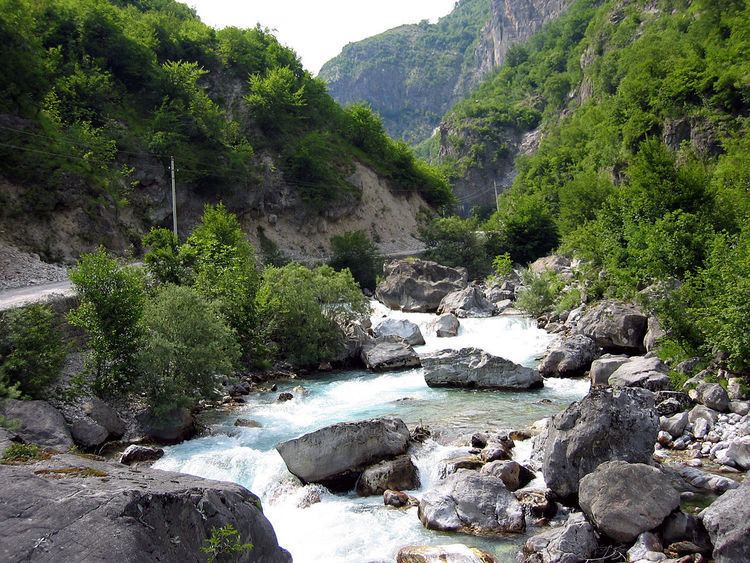 | ||
Krasniqe is a mountainous region (krahinë) of the Prokletije range in northeastern Albania, bordering Kosovo. It is related to a historical northern Albanian tribe, also called Krasniqi. The region lies within the Tropojë District, and stretches from the Valbonë river in the north to Lake Fierza in the south, and includes Bajram Curri. The Krasniqi tribe was widespread into Kosovo.
Contents
- Luljeta krasniq qorr ilazi
- Geography
- History
- Ethnography
- Genetics
- Krasniqi in the Republic of Macedonia
- Notable people
- References
Luljeta krasniq qorr ilazi
Geography
The Krasniqi region is situated in the District of Tropoja north of the Drin River, from Fierza east to the District of Has, and north to the Montenegrin border, including most of the upper Valbona valley.
It borders on the traditional tribal regions of Nikaj-Mërtur to the west, Bugjoni to the south, Bytyçi to the east, and Gashi to the northeast.
History
The name, was recorded in 1634 as Crastenigeia.
There exist differing views on the origin of the tribe.
It is a historical bajrak, which together with Gashi, Bytyçi and Nikaj-Mërtur constituted the Malësia e Gjakovës ("Mountains of Gjakova"). In a narrower sense, the Gjakova highlands include the Krasniq, Bytyç and Gash. In Albanian ethnographical studies, the Gjakova Highlands include Krasniq, Gash and Bytyç.
Beside the historical habitat, most of the Krasniqi fis (clan) are located in Kosovo, especially in the western part, having settled there since 18th century.
Ethnography
The region is inhabited by Muslims; the tribe converted from Christianity into Islam in the Ottoman period.
The tribe's (historical) patron saint is St. George, whom they still revere after Islamization.
According to mythology, the Krasniqi descend from a Kolë Mekshi, a brother to the founders of the Serb (Slavic) tribes of Vasojevići, Piperi, Ozrinići and the Albanian tribe of Hoti, respectively. The Krasniqi revere their mythological kinship especially to the Vasojevići, an Orthodox Serb tribe in eastern Montenegro.
Genetics
All members of Krasniqi clan tested so far belong to the two haplogroups, J2b-M241 or E-V13, pointing to the composite origin. However, both haplogroups are over-represented in Albanian and Greek population respectively, and are associated with a Neolithic or even Mesolithic Balkans, thus ruling out the speculation about Slavic origin.
Krasniqi in the Republic of Macedonia
On the Kumanovo Black Mountain, Albanians of the Krasniqi fis were present in the villages of Gošince, Slupčane, Alaševce (in Lipkovo) and Ruđince (in Staro Nagoričane), according to a 1965 journal.
